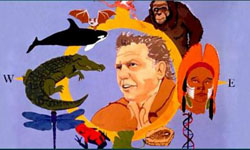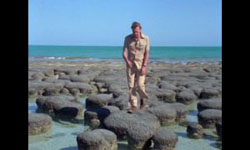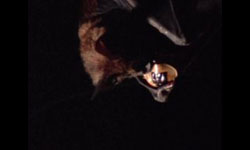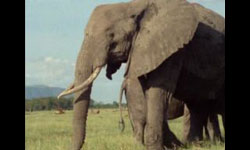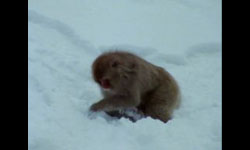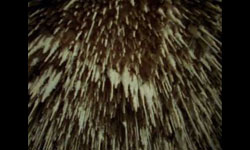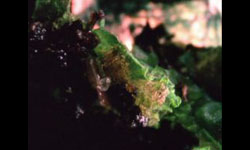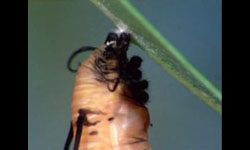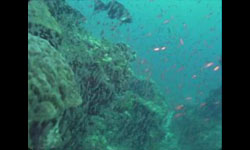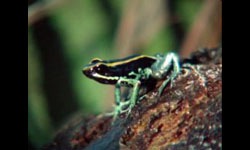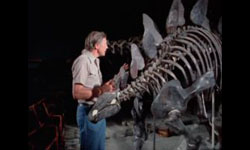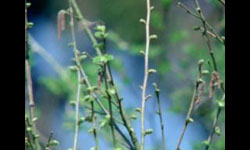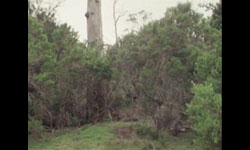-
Life on Earth
-
BBC
The story of life, from the first primitive cells to the plants and animals that now live around us.
- No subtitles
- 705
The story of life, from the first primitive cells to the plants and animals that now live around us.
Life on Earth: A Natural History by David Attenborough is a groundbreaking television natural history series made by the BBC in association with Warner Bros. and Reiner Moritz Productions. It was transmitted in the UK from 16 January 1979.
- Biology
- Environmental Studies
- No subtitles
- 45
Life on Earth: A Natural History by David Attenborough is a groundbreaking television natural history series made by the BBC in association with Warner Bros. and Reiner Moritz Productions. It was transmitted in the UK from 16 January 1979.
A little furry animal from the jungles of South-East Asia, called a tree shrew, has attracted great interest from scientists because it shows how a great group of animals may have originated - the mammals.
- Natural World
- No subtitles
- 55
A little furry animal from the jungles of South-East Asia, called a tree shrew, has attracted great interest from scientists because it shows how a great group of animals may have originated - the mammals.
David Attenborough explores the eternal duel between the hunters and the hunted - one of the driving forces of evolution.
- Natural World
- No subtitles
- 55
David Attenborough explores the eternal duel between the hunters and the hunted - one of the driving forces of evolution.
David Attenborough's now legendary encounter with young gorillas is featured in this episode as he looks at the history of primates, whose ancestors sought their fortune in the treetops. There they developed binocular vision for accurately judging distances, and the ability to grasp trees with a firm grip. The group includes dazzling gymnasts, deafening choristers and highly cultured monkeys.
- Natural World
- No subtitles
- 55
David Attenborough's now legendary encounter with young gorillas is featured in this episode as he looks at the history of primates, whose ancestors sought their fortune in the treetops. There they developed binocular vision for accurately judging distances, and the ability to grasp trees with a firm grip. The group includes dazzling gymnasts, deafening choristers and highly cultured monkeys.
David Attenborough looks for crucial clues that help to explain how and why we have come to dominate life on Earth.
- Natural World
- No subtitles
- 55
David Attenborough looks for crucial clues that help to explain how and why we have come to dominate life on Earth.
Bright blue starfish, crimson feather stars, shell-less snails in designs as extravagant as any Paris fashion show, shrimps of every colour, others that are transparent - just a sample of the animal wonders to be found in a small area of the Great Barrier Reef.
- Natural World
- No subtitles
- 55
Bright blue starfish, crimson feather stars, shell-less snails in designs as extravagant as any Paris fashion show, shrimps of every colour, others that are transparent - just a sample of the animal wonders to be found in a small area of the Great Barrier Reef.
For most of Earth's history there was no life on land. But over 400 million years ago some tiny plants began an invasion from the water, closely followed by the first animals - the ancestors of millipedes and insects.
- Natural World
- No subtitles
- 55
For most of Earth's history there was no life on land. But over 400 million years ago some tiny plants began an invasion from the water, closely followed by the first animals - the ancestors of millipedes and insects.
The number of insect species runs into millions; a single termite colony may consist of a million individuals; a locust swarm even a million million.
- Natural World
- No subtitles
- 55
The number of insect species runs into millions; a single termite colony may consist of a million individuals; a locust swarm even a million million.
Fish occur in populations of billions and there are over 30,000 species, more than in any other group of backboned animals. The development of the backbone was a crucial advance in evolution -and it probably came from a most unlikely source, a little jelly-like creature called a sea squirt.
- Natural World
- No subtitles
- 55
Fish occur in populations of billions and there are over 30,000 species, more than in any other group of backboned animals. The development of the backbone was a crucial advance in evolution -and it probably came from a most unlikely source, a little jelly-like creature called a sea squirt.
Some 350 million years ago, evolution reached one of its most crucial stages when fish crawled from water onto the land and became amphibians. Today, newts, salamanders, toads and frogs still survive in great quantities, and there is even one species of frog where the male gives birth from its mouth! Presented by David Attenborough
- Natural World
- No subtitles
- 55
Some 350 million years ago, evolution reached one of its most crucial stages when fish crawled from water onto the land and became amphibians. Today, newts, salamanders, toads and frogs still survive in great quantities, and there is even one species of frog where the male gives birth from its mouth! Presented by David Attenborough
David Attenborough looks at the history of reptiles, the first back-boned creatures to solve the problems of living high and dry on the land. Their waterproofed skin and sealed eggs enabled the mighty reptiles to rule the world.
- Natural World
- No subtitles
- 55
David Attenborough looks at the history of reptiles, the first back-boned creatures to solve the problems of living high and dry on the land. Their waterproofed skin and sealed eggs enabled the mighty reptiles to rule the world.
The story of life, from the first primitive cells to the plants and animals that now live around us. David Attenborough examines the uses and advantages of birds' unique possession - the feather. Man has yet to invent anything that, weight for weight, is as strong as the feather. Feathers are insulators, they provide the surface of the most perfect aerofoils known - bird's wings
- Natural World
- No subtitles
- 55
The story of life, from the first primitive cells to the plants and animals that now live around us. David Attenborough examines the uses and advantages of birds' unique possession - the feather. Man has yet to invent anything that, weight for weight, is as strong as the feather. Feathers are insulators, they provide the surface of the most perfect aerofoils known - bird's wings
Mammals have proved to be one of the most adaptable products of evolution. David Attenborough looks at their evolution from reptiles 200 million years ago. This remarkable transition involved the development of mechanisms for regulating body temperature, for allowing the young to develop in the womb and for suckling newborns.
- Natural World
- No subtitles
- 55
Mammals have proved to be one of the most adaptable products of evolution. David Attenborough looks at their evolution from reptiles 200 million years ago. This remarkable transition involved the development of mechanisms for regulating body temperature, for allowing the young to develop in the womb and for suckling newborns.

